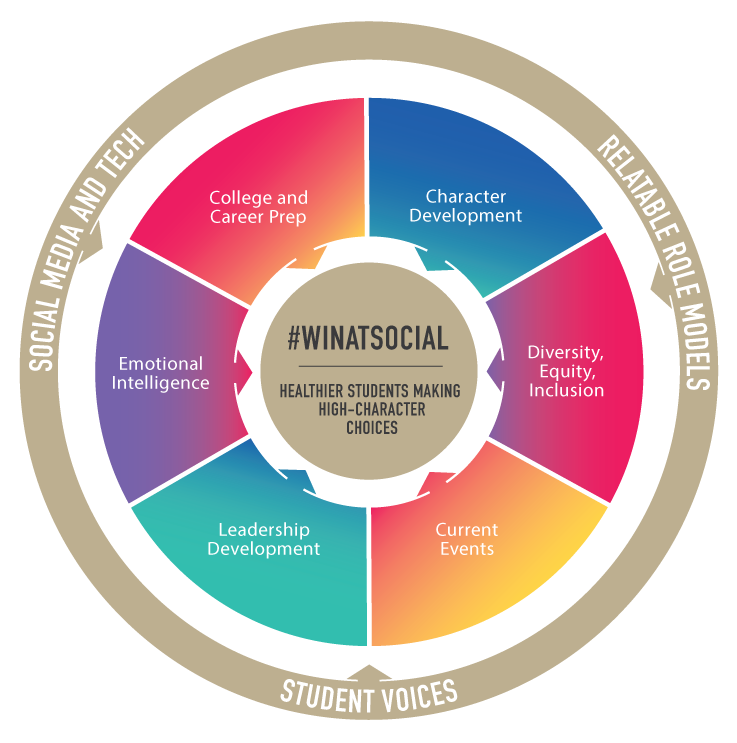Webinar Recap: How to avoid 5 common mistakes when implementing social-emotional learning
In today’s digital age, the pressures of social media can be overwhelming for students. From changing trends to comparing the number of followers, students today face challenges unlike any generation before them.
Social media directly impacts social-emotional health, which is essential to fostering positive environments for students. It can be challenging for educators to implement social-emotional learning, especially with constantly-evolving technology.
The Social Institute’s Founder and CEO Laura Tierney recently welcomed Athens Academy’s Bob Sears and Woodward Academy’s McKenzie Lawson for a 30-minute SEL webinar focused on how schools can avoid five common mistakes when implementing SEL. As trusted TSI partners with over 30 combined years of experience counseling and facilitating social-emotional learning programs, Sears and Lawson draw upon their vast knowledge and experience to empower educators with SEL and set them up for sustained success.
You can check out the full webinar here. We’ve included some highlights and key talking points below to serve as a primer.
The five common mistakes explored
- Schools don’t empower their entire community through a common language and consistent approach.
- Schools approach SEL in a one-dimensional way
- Adults lecture students
- Schools rely on one-in-done efforts
- Schools use outdated and out of touch SEL content
Mistake 1: Schools don’t establish consistent, shared language
A strong SEL program allows schools to empower their entire community through a common language and consistent approach. A strong first step? Aligning all SEL programming with CASEL and its evidence-backed five core competencies.
In addition to interactive lessons for engaging classroom experiences, TSI offers the Social Toolkit featuring a comprehensive library of additional resources and family discussion questions mapped to specific lessons. Shares Sears, “With the TSI curriculum, the families get access to the same content and the student, so it empowers parents to have these conversations too.”
Mistake 2: Schools approach SEL in a one-dimensional way
The Social Institute’s curriculum is more than just a tool to enhance SEL. It develops and nurtures critical soft skills, sparks meaningful and engaging conversations on relevant topics, and strengthens personal interactions within the classroom. How current events play out in everyday life has a profound impact on students both in and out of the classroom, an observation not lost on Lawson. “It is impossible to keep what is happening in the real world outside of the classroom… there is no dividing it anymore. Students feel the pressure.”
Schools need modern SEL solutions that reflect the increasingly complex nature of today’s world. TSI’s #WinAtSocial Program involves a multi-dimensional approach that features social media media and technology, student voices, and relatable role models, all of which play into the myriad of factors supporting social-emotional health.

Mistake 3: Adults lecture students
The partnership of learning together is a skill that TSI advocates and pushes. Most teachers today did not have social media throughout their adolescent years. This social media experience is new not only for students but for parents and teachers too. Incorporating students in the learning process but also the education process is critical. Elevating student voices through vulnerability and shared experiences is essential in pushing back against outdated lecturing instincts.
Mistake 4: Schools rely on one-in-done efforts
Checking a box once a year or once a semester does not adequately address social-emotional learning. “One in done does not work”, shares Sears. “Students need to view SEL as part of their daily lives.” Students desire to participate in hard conversations, connect with others, and engage with meaningful programming.
Mistake 5: Schools use outdated and out-of-touch SEL content.
No teacher wants students to roll their eyes in the middle of a lesson. And yet, it’s a common shortcoming of many SEL initiatives that don’t always resonate with students. Delivering impactful and lasting messages requires engaging and relevant content that directly relates to what students actually experience, both on and offline. Staying current invites students to join and advance the conversation.
MORE: HOW TSI WORKS WITH STUDENTS
For a complete breakdown of all five mistakes, along with specific solutions for each, WATCH the full webinar.
You can also check out our regularly updated webinar schedule for upcoming timely webinars featuring guest thought leaders and updated research and insights.
About The Social Institute
The Social Institute partners with schools nationwide to empower students, families, and educators to positively navigate social-emotional health, social media, and technology. Schools access our student-respected, turnkey curriculum through WinAtSocial.com, an interactive, gamified learning platform. With solutions for students, parents, and educators, we offer a systemic and comprehensive SEL program through a unique and positive approach. We are proud to serve public and independent partners such as Ravenscroft School, Woodward Academy, Oldfields School, All Saints Episcopal School, Lake Forest School District, Boston Public Schools, and more. For more information on how to empower your students to make high-character decisions online and off, please contact us.
